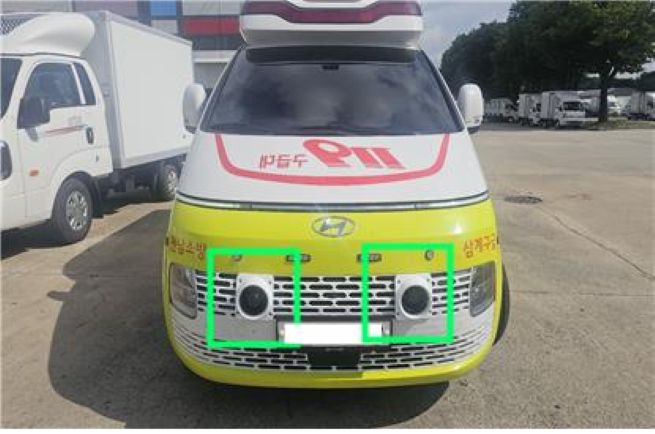
High-powered directional siren (audio device) installed on a 119 ambulance (Photo courtesy of the National Fire Agency)
SEOUL, Aug. 25 (Korea Bizwire) — South Korea’s National Fire Research Institute announced Sunday that it will pilot new visual and audio devices designed to reduce ambulance collisions at intersections, deploying them across seven regions over the next three months.
The system combines a “logo light,” which projects warning messages such as “ambulance approaching” onto road surfaces at night, and a high-powered directional siren that concentrates sound in specific directions to prompt faster responses from nearby drivers.
In tests, the logo light reduced drivers’ reaction times by an average of 14.6 percent. The directional siren, meanwhile, remains distinguishable from background noise even 25 meters away, compared with just 10 meters for conventional ambulance sirens.
The logo light was first conceived by firefighter Cho Seung-hwan of the Sejong Fire Department, whose design won top honors at a Fire Agency–sponsored research competition in 2023.
The pilot project was made possible after the Ministry of Land, Infrastructure and Transport granted a special regulatory exemption in July. Testing will take place in Incheon’s Bupyeong District, three cities in North Chungcheong Province — Cheongju, Okcheon and Danyang — and two counties in South Jeolla Province, Yeonggwang and Jangseong. The trial runs from August through October.
Officials said the program will collect data to evaluate the devices’ effectiveness and determine whether to expand the initiative nationwide.
“We expect this pilot to meaningfully reduce ambulance traffic accidents, ensuring both the safety of emergency responders and quicker access to life-saving care for citizens,” said Kim Yeon-sang, head of the National Fire Research Institute.
M. H. Lee (mhlee@koreabizwire.com)

